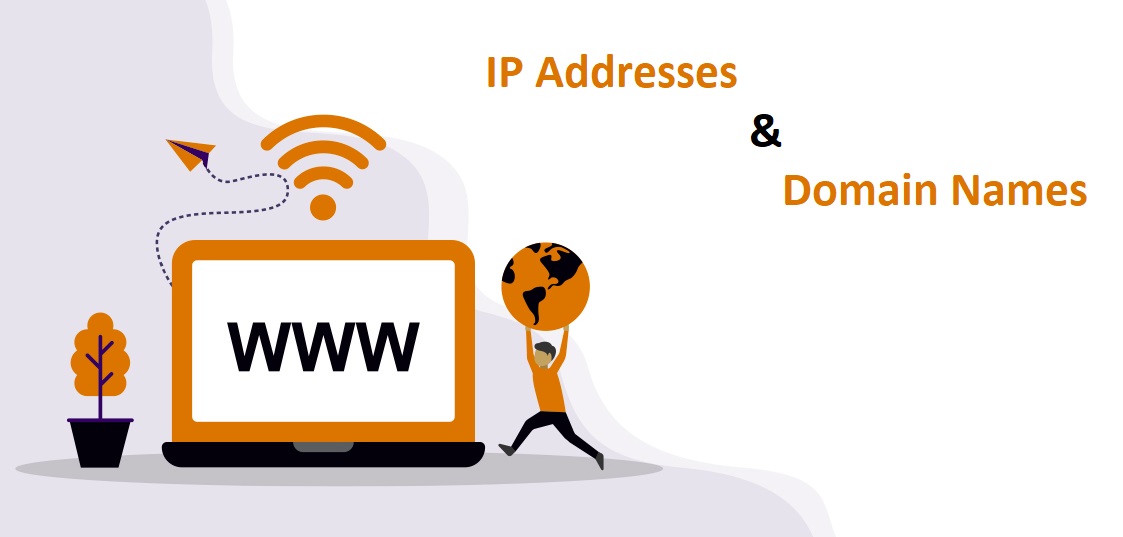How IP Addresses and Domain Names Work Together
Internet users find websites not unlike how someone would use a map to find a physical location. If a website were a building, its URL would be its exact address. The IP address would be analogous to a vehicle going to that location.

The domain name is an element of the URL
The URL contains a lot of details. It is like a set of directions, and one of the elements is the domain name. It is also easiest to recognize. When an internet user enters a web address into their browser, this launches the process of finding the requested site. The URL and the domain name must point to that location correctly for this to happen.
More about IP addresses and domain names
The IP is a numeral string that makes it possible to find a website. It makes no sense to people, but computers use it to find addresses. The domain name is a link to the IP. It directs to the place where the IP address's data is.
You can also think of the domain name as a nickname for the code and IP addresses as the actual code. In sum, domain names are part of URLs and lead to IP addresses.
The information within the domain name allows web browsers to find web pages. The naming system is carefully regulated to prevent duplicate addresses and confusion in general. IPv6, a new IP version, came into being as demand for domain names rose. It increased the number of domain names available.
Why do domain names work?
Domain names give internet users a short and memorable name. The web address is entered from left to right, but the domain name is read in the opposite direction as per a specific naming hierarchy.
Each domain name has three components: its ending, the middle part, and the www. The ending, usually .com, is the top-level domain. In the name www.website.com, website is a sub-domain. Finally, www stands for World Wide Web. Most top-level domains have three letters.
Common top-level domains
Top-level domains are on the highest level of the naming system used online. Originally, this naming system was created to identify categories, organizations, and countries. Apart from .com, other common top-level domains are .org, .net, .edu, and .mil. After these domains expanded, a large number of new ones came into being, which include .biz and .info.
Users can recognize country codes easily because the abbreviations are used for many different purposes. There have been some changes to the organization of the domain name hierarchy and the option to reserve them for just one objective.
Of all domain components, people recognize sub-domains most easily. It is becoming increasingly common to see several sub-domain levels. Some organizations have developed specific conventions to communicate details within internal coding systems.
You should read it
- The best top 10 Public DNS Server you should know now
- Instructions on how to check .vn domain name on VNNIC
- How does DNS work?
- Learn about .io domain names
- 7 issues to avoid when deploying DNS
- Introduction to DNS and DNS roaming
- Stories behind .unicorn, .ninja and other strange domain names
- Google introduces new .page high-level domain names
- Famous websites have changed domain names before 'being successful'
- 10 DNS security measures
- Request to revoke VNG's Zalo.vn and Zalo.me domain names because social networking activities are not allowed
- What is top-level domain name (TLD) and how do they work?






 How does DNS work?
How does DNS work? The best top 10 Public DNS Server you should know now
The best top 10 Public DNS Server you should know now Instructions on how to check .vn domain name on VNNIC
Instructions on how to check .vn domain name on VNNIC Learn about .io domain names
Learn about .io domain names What is top-level domain name (TLD) and how do they work?
What is top-level domain name (TLD) and how do they work? 7 issues to avoid when deploying DNS
7 issues to avoid when deploying DNS